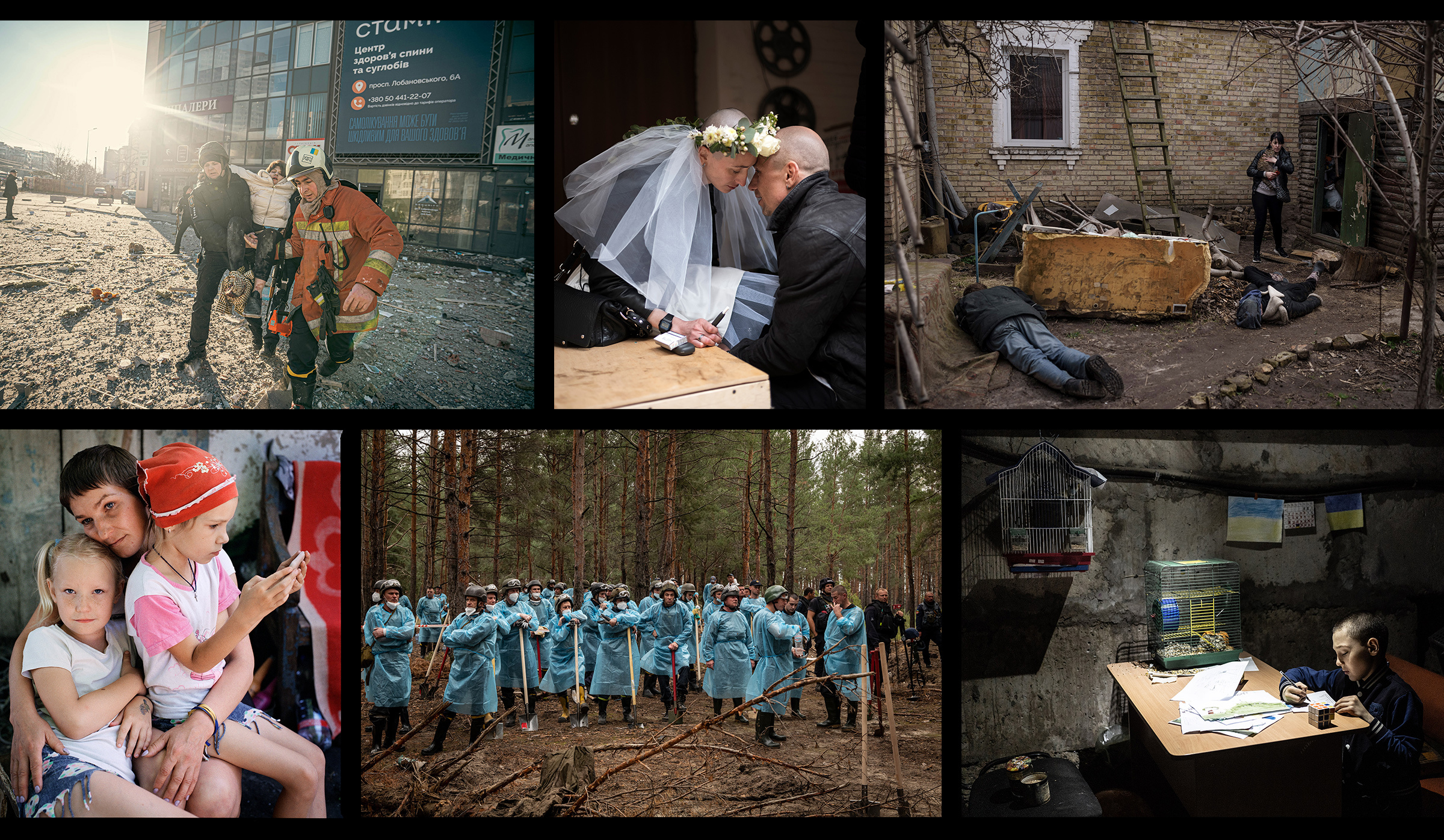One year since Russia’s invasion of Ukraine, photojournalists have seen it all. Weary from attending far too many funerals and finding bodies under the rubble, many feel a sense of duty to document Moscow’s aggression for all the world to see.
It’s hard not to get involved sometimes in ways that go beyond the camera. In one moment, Pavlo Petrov, a photographer for the State Emergency Service of Ukraine, found himself picking up a fire extinguisher to put out flames after a rocket attack in Kyiv.
With all the death and destruction in Ukraine, many photojournalists say they are drawn to capture subtle moments of joy amid the tragedy. Nicole Tung recalls children playing on a colorful swing set with destroyed buildings in the background in Borodyanka, in northern Ukraine. Meanwhile, Petrov remembers returning a gymnastics suit found in the rubble to a 7-year-old girl who was rescued from a Russian rocket attack but whose father did not make it.
The moments of hope are often short-lived. Felipe Dana remembers stepping outside at midnight on New Year’s Eve. Celebratory chants were quickly followed by the sound of air raid sirens across Kyiv.
To mark the war’s anniversary, TIME spoke to various photographers—some of whom are Ukrainian—about what motivates them to continue covering the war, and the defining moments that have stayed with them. Their work has been featured in TIME, The Washington Post, the New York Times, and Associated Press, among other outlets.
Read More: How the World Changed in the Year Since Russia’s Invasion of Ukraine
For some, it’s professional; they say they have a duty to document the conflict. But for others, it’s also personal; they have had colleagues, family members, or friends killed in the war.
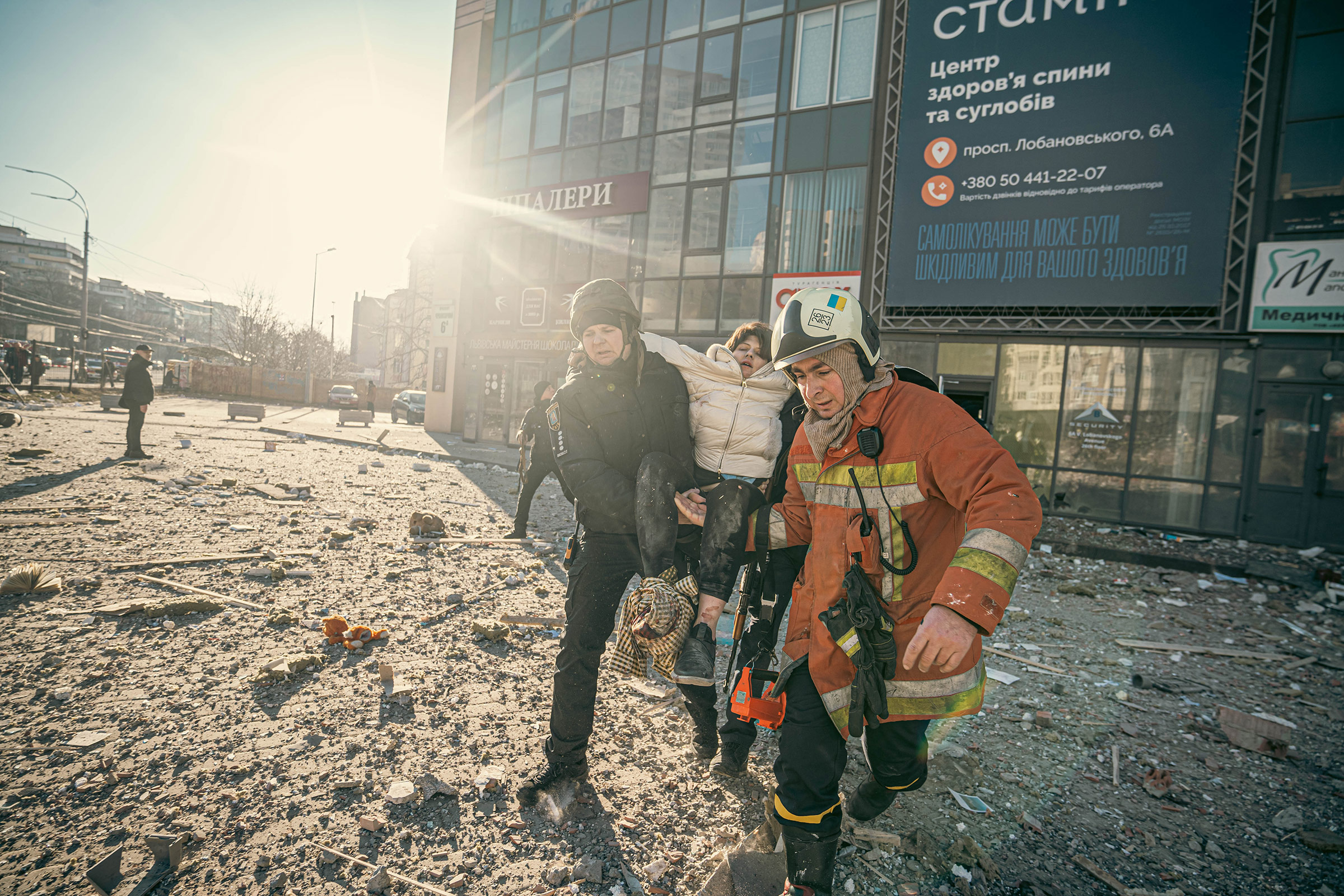
Pavlo Petrov
Pavlo Petrov, 27, remembers spotting a gymnastics suit while accompanying rescuers searching for victims of a Russian rocket attack in Kyiv last June. He soon learned that it belonged to a 7-year-old girl who had been rescued from the rubble, along with her mother; her father, however, didn’t survive. Two weeks later, he visited the girl in hospital and gave her the suit back. “You know—it was a hope, a hope for me, that even after losing her father, losing her home, she would not lose herself,” Petrov says.
One of the most defining moments for Petrov, he says, was after a rocket attack in Kyiv on March 1. After arriving on the scene with firefighters and rescuers, he saw several burned bodies. He picked up a fire extinguisher to put out the flames.
Petrov, who is a photographer for the State Emergency Service of Ukraine, had been photographing firefighters in Luhansk, a partially occupied region, since 2017; this helped him adapt to covering the war up-close over the last year.
His photography is a way to push back against Russian propaganda, he says. “It is also very important that people abroad see it. Ukrainians are a strong nation and thanks to the support of the world, we become even stronger.”
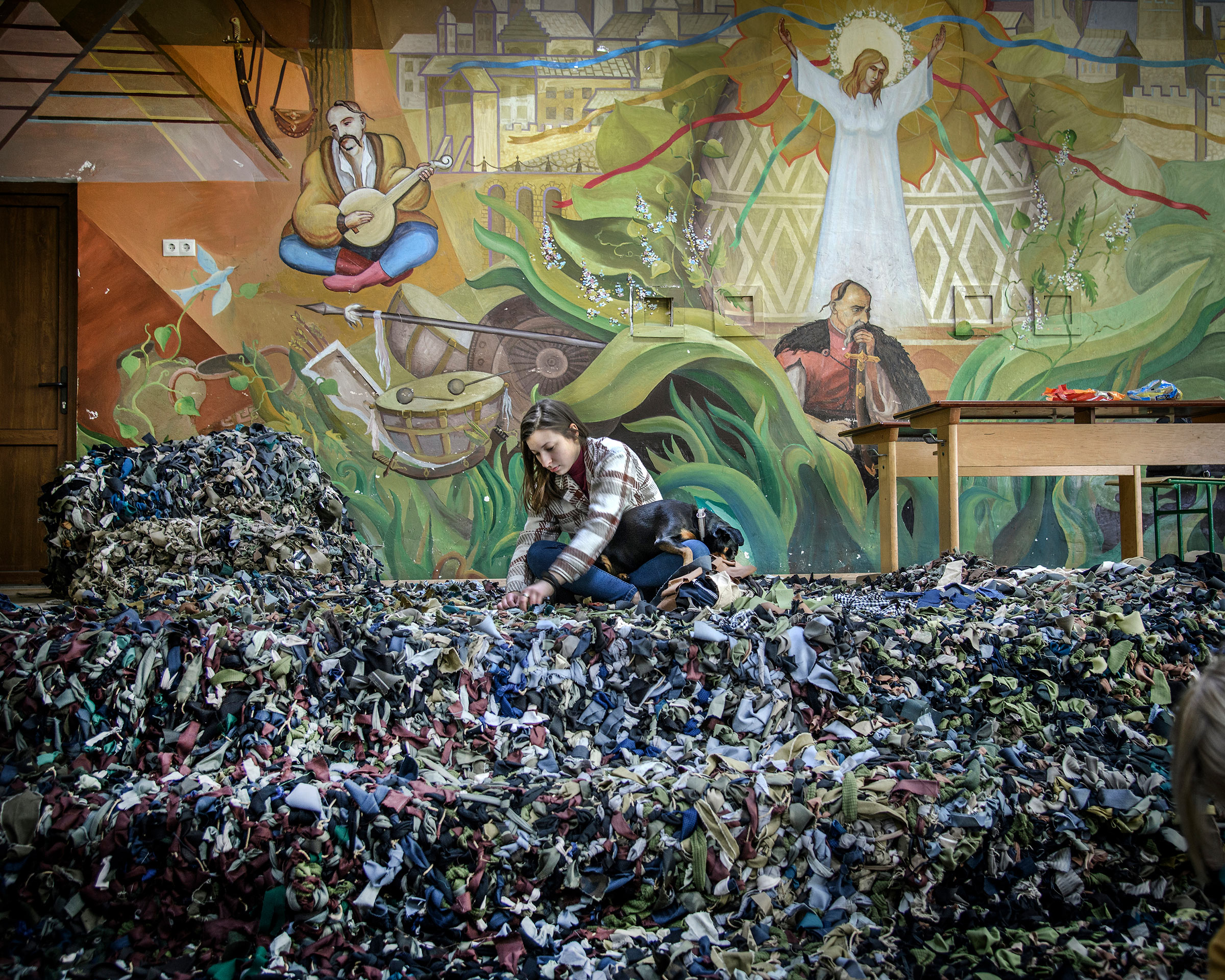
Justyna Mielnikiewicz
Justyna Mielnikiewicz has covered the legacy and impact of the Soviet Union in the Caucasus region, plus Ukraine and Crimea for the past two decades. She was working in Dnipro, Ukraine last February when the invasion happened; the Wall Street Journal assigned her to cover the war. “Being able to photograph the war for one of the leading U.S. papers, where my work serves as a direct communication channel with viewers in faraway places, fulfills that sense of purpose,” Mielnikiewicz says.
Mielnikiewicz has been struck by Ukrainian civilians who have learned to fight and trained on the frontline. She has grown weary of daily funerals. “I can not recall feeling joy while working in Ukraine, but something closest to it would be hope—in people, their strength, resilience, and humanity,” Mielnikiewicz says. “I feel happy when I hear that people I photographed get their family members, friends back from imprisonment in Russia.”
She believes that photography is important not only to document Russia’s harm but also tap into a wider array of emotions. “I believe photography, besides informing, should engage the viewer emotionally—not necessarily only by showing death and destruction,” Mielnikiewicz says.
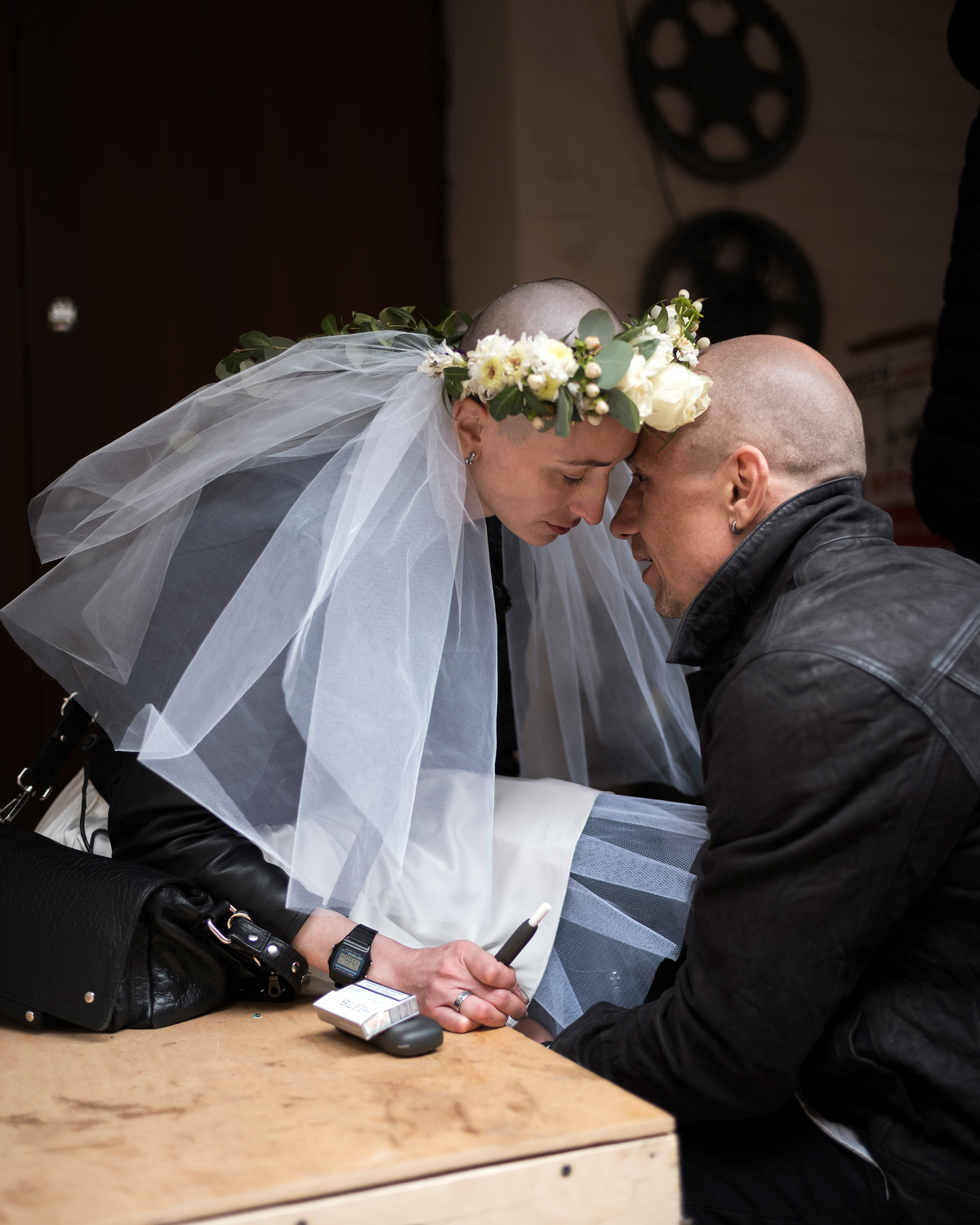
Agata Grzybowska
Agata Grzybowska has witnessed moments of both life and death on the job. At one shelter, she met many pregnant women. “When the babies were delivered, you could feel as if this new life overcame all the evil around—that life wins. Such moments are very precious,” Grzybowska says. While she saw bullet-riddled bodies at a morgue, she has also seen friends living together in a basement baking bread to deliver to those in need.
Grzybowska says she is grateful for the trust of every stranger who has invited her into their home, basement, or shelter. “In my photographs, I especially cared to show that despite all the pain and loss, atrocities, air raids, and constant danger—against all odds, even when their reality had turned upside down, people are trying to live, have hope, and to help each other, even if they are total strangers,” she says.
Grzybowska documented the situation at the Ukrainian border shortly after Russia’s invasion. That’s where she met Svetlana, who was on her way to Italy to leave her son with people whom she had never met before. Svetlana was planning to return to Ukraine and help as a volunteer; she couldn’t imagine leaving the country when her husband—a professional soldier—and her friends were fighting. “So when lots of photojournalists were focusing on those who were leaving, I decided to focus on those who stayed,” Grzybowska says.
Grzybowska has worked as a photographer in Ukraine since Russia’s annexation of Crimea in 2014.
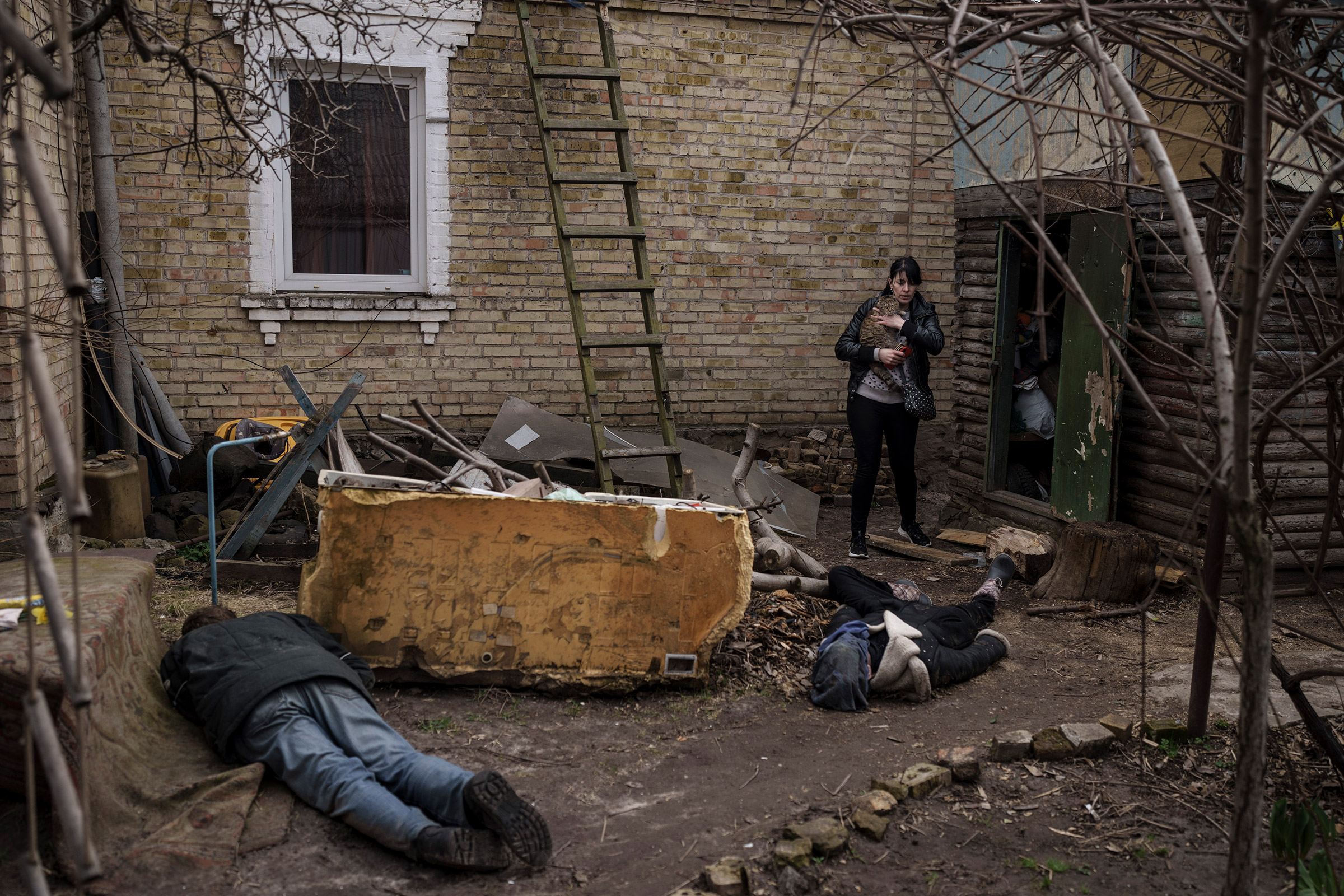
Felipe Dana
On New Year’s Eve, Felipe Dana, 37, went outside to take photos in Kyiv. The streets were empty at midnight and a curfew was underway. Dana heard local residents shout “Happy New Year” and “Glory to Ukraine” from their balconies as they celebrated indoors. But just 30 minutes into the New Year, air raid sirens blared—followed by the sound of explosions over the capital.
Dana, who works as a photographer for the Associated Press, remembers how so many of the images he captured featured graphic photos of dead civilians in neighborhoods relentlessly hit by shelling and explosions. “I realized I had seen nothing but bodies on the streets for the past few days… That day I reflected and decided that regardless of how horrible the scenes in some of the photos were, that was the reality there and people should see it,” Dana says.
Despite the terror of war, Dana says he is optimistic that photography has the power to help hold people to account.
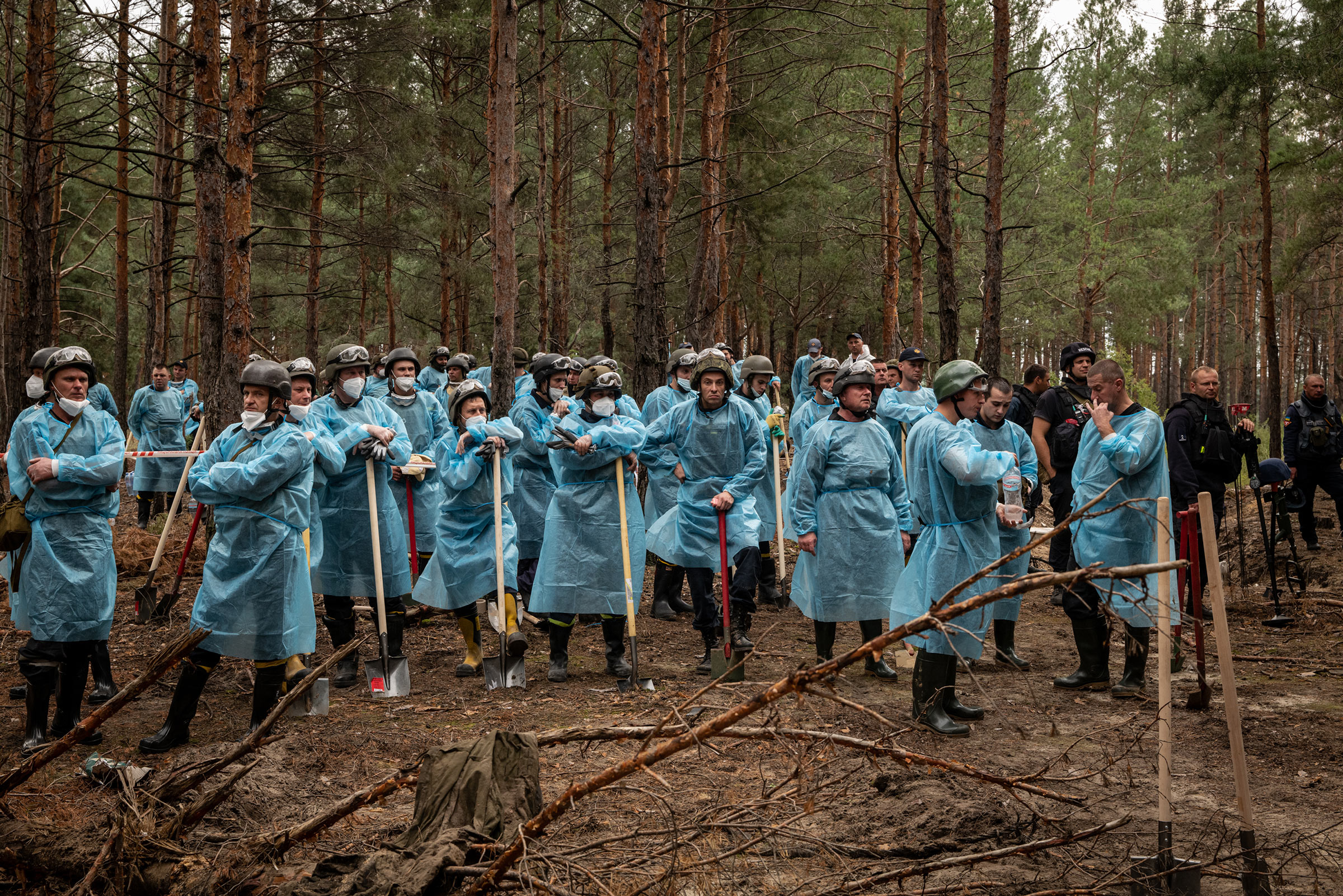
Nicole Tung
Children playing on a colorful swing set amid rubble in Borodyanka, not far from Kyiv. Best friends reuniting after being evacuated from Mariupol. Families fleeing with nothing but a plastic bag and saying goodbye to men who had to stay behind to fight. These are the scenes that Nicole Tung has witnessed over the past year, while traveling between her home in Istanbul and the front lines in Ukraine. “So many other times it wasn’t the big, obvious shocking things that defined the year for me, but the subtle moments,” she says.
Tung has worked for outlets including the New York Times, the Washington Post, and Harper’s magazine. Although she does not speak Ukrainian, her continued presence has given her a sense of how the war has evolved over time. “We see people who had fled only months ago return and head back to school,” Tung says. “Volunteers, and the military, continue to do their essential work to support the displaced.”
While she has covered conflicts worldwide, Tung recognizes she is an outsider in Ukraine. “We have to empathize with what they are living through,” she says of Ukrainian journalists and photographers, “to be able to understand everything that’s said by grieving countrymen and women, to be absorbing everything all the time. For the Ukrainian photographers, there are so many more layers.”
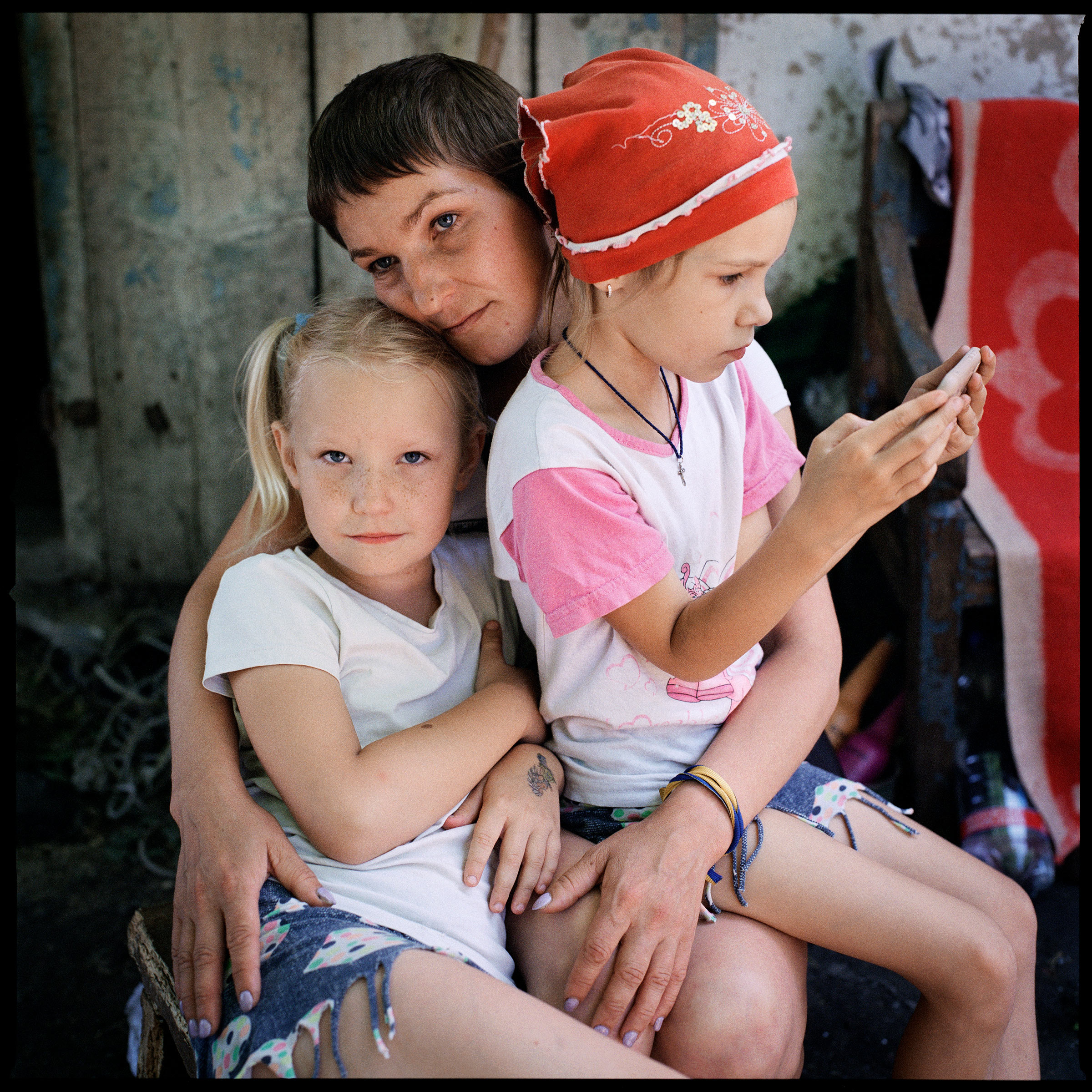
Anastasia Taylor-Lind
Anastasia Taylor-Lind has been photographing Ukraine since Russia’s annexation of Crimea in 2014.
She has been working with Alisa Sopova, a writer and anthropologist from Donbas, on a project focused on Ukrainian communities divided by the frontline.
As part of the 5K from the Frontline project, Taylor-Lind and Sopova spent time with the Grinik family from Avdiivka, in Ukraine’s eastern Donetsk region. The mother, Olga, and her children are now living west of there in the Poltava region, while her husband Nikolay is a soldier in Ukraine’s army. “The family are our friends as well as protagonists in our long-term work about how people adapt and build lives around the ‘new normal’ of war,” Taylor-Lind says. “To see the kids, Miroslava and Kirill, safe and happy and starting a new school last fall was special.”
Taylor-Lind is from the United Kingdom. “I keep in mind the perspective that I am an outsider, who has a choice whether to photograph the war or not, or when to leave. I am able to work free of worry that my own family are not in danger; my own home is safe. This is not a privilege afforded to my Ukrainian colleagues.”
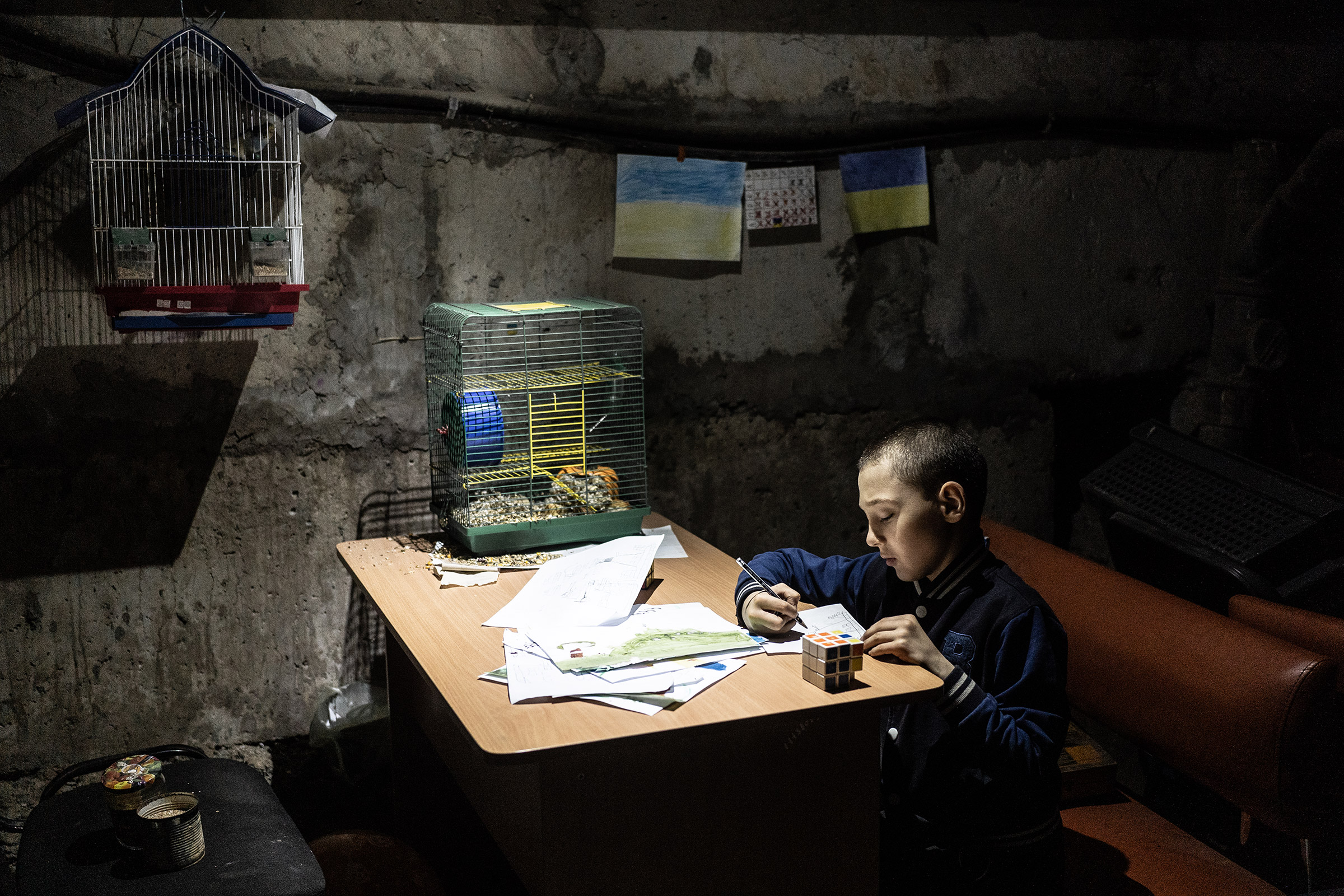
Serhii Korovainyi
Serhii Korovainyi, 28, could never imagine leaving Ukraine—even during the darkest days of the war in Ukraine. “This is my country, the one place in the world where I can be myself. It needs me, and I need it as well,” Korovainyi says.
The war has been volatile. Brief moments of joy—like when Ukrainians celebrated liberating Kherson from Russian control—were quickly overshadowed by Russia destroying the area with artillery, he says.
Korovainyi hopes that photography can help convey the pain of the war as well as humanize Ukrainians. “This war is cruel and ugly, and photography helps people to understand the scale of this ugliness… Photography can remind viewers outside my country that Ukrainians are just regular people, not only numbers in the list of casualties and refugees.”
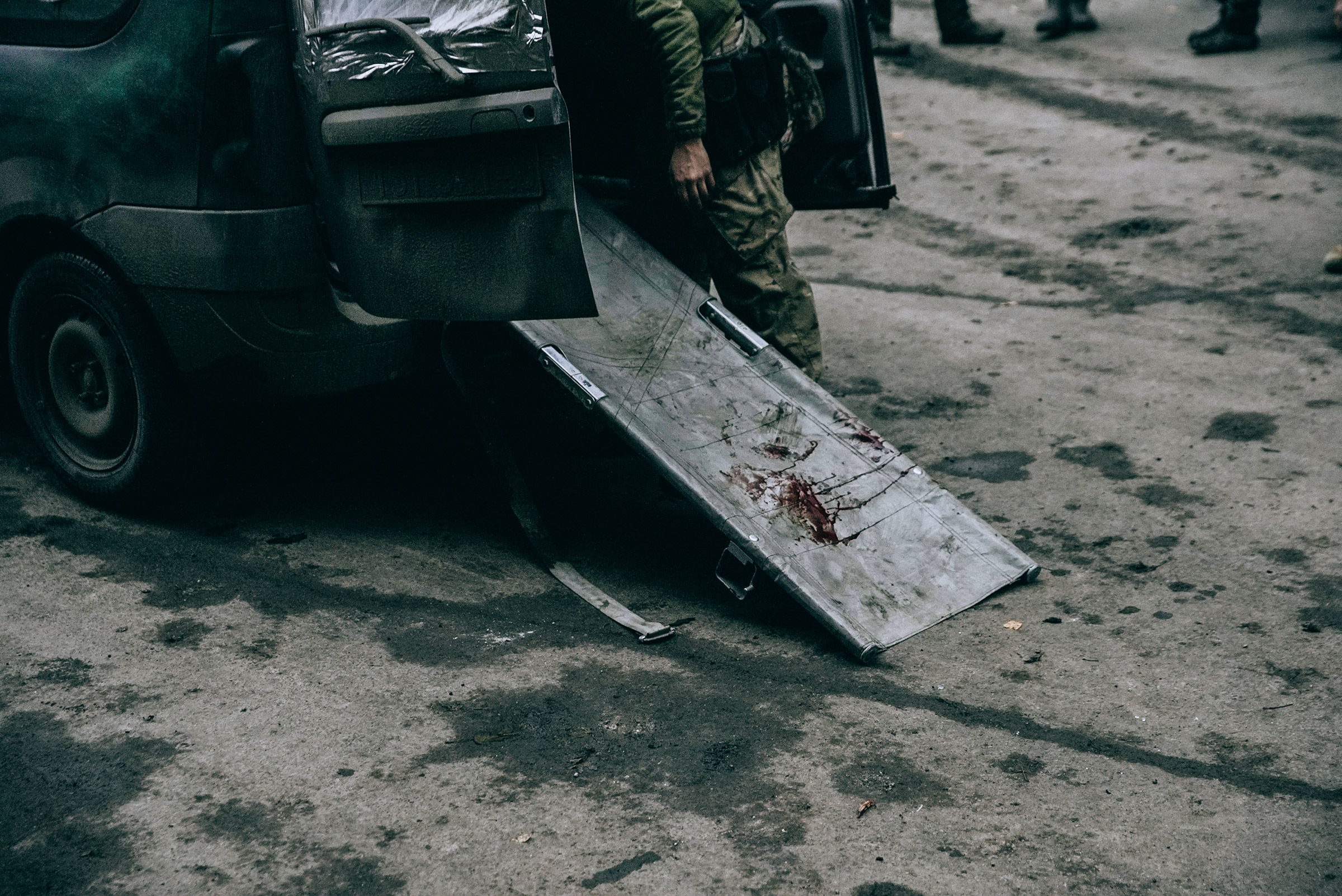
Julia Kochetova
Julia Kochetova, 29, is a Ukrainian photographer who has been documenting revolution and then war in her home country for nearly a decade. She has a folder on her phone with pictures of her friends and colleagues who were killed in action. “In the moments of desperation, when I so badly want to lie down on the floor and never stand up, I’m scrolling through this folder in my phone gallery and it gives me the strength to continue no matter what,” Kochetova says.
She represents a generation of Ukrainians whose youth was marked by Russia annexing Crimea in 2014. She has covered Ukraine closely since Russia’s full-scale invasion last year.
Kochetova was moved in particular by the story of a woman who goes by Granny Maria, whom she found a day after the liberation of Bucha. Granny Maria was holding a piece of bread, had her phone’s SIM card stolen, and had been sleeping in a dirty jacket for a month. Kochetova discussed with her colleagues how it was important to try and find her relatives.
After her colleague posted a portrait of the woman on Facebook, Granny Maria’s family members reached out. “It was one of the best days in my life; I started to cry in the middle of the store but all my surroundings didn’t matter. I felt how important it was to focus on personal stories, not only on numbers of victims or amount of tanks,” Kochetova says.
Kochetova plans to continue photographing as long as the war lasts. “My camera should multiply the voices of Ukrainians in war,” she says. “I want people outside to see that war is not over.”
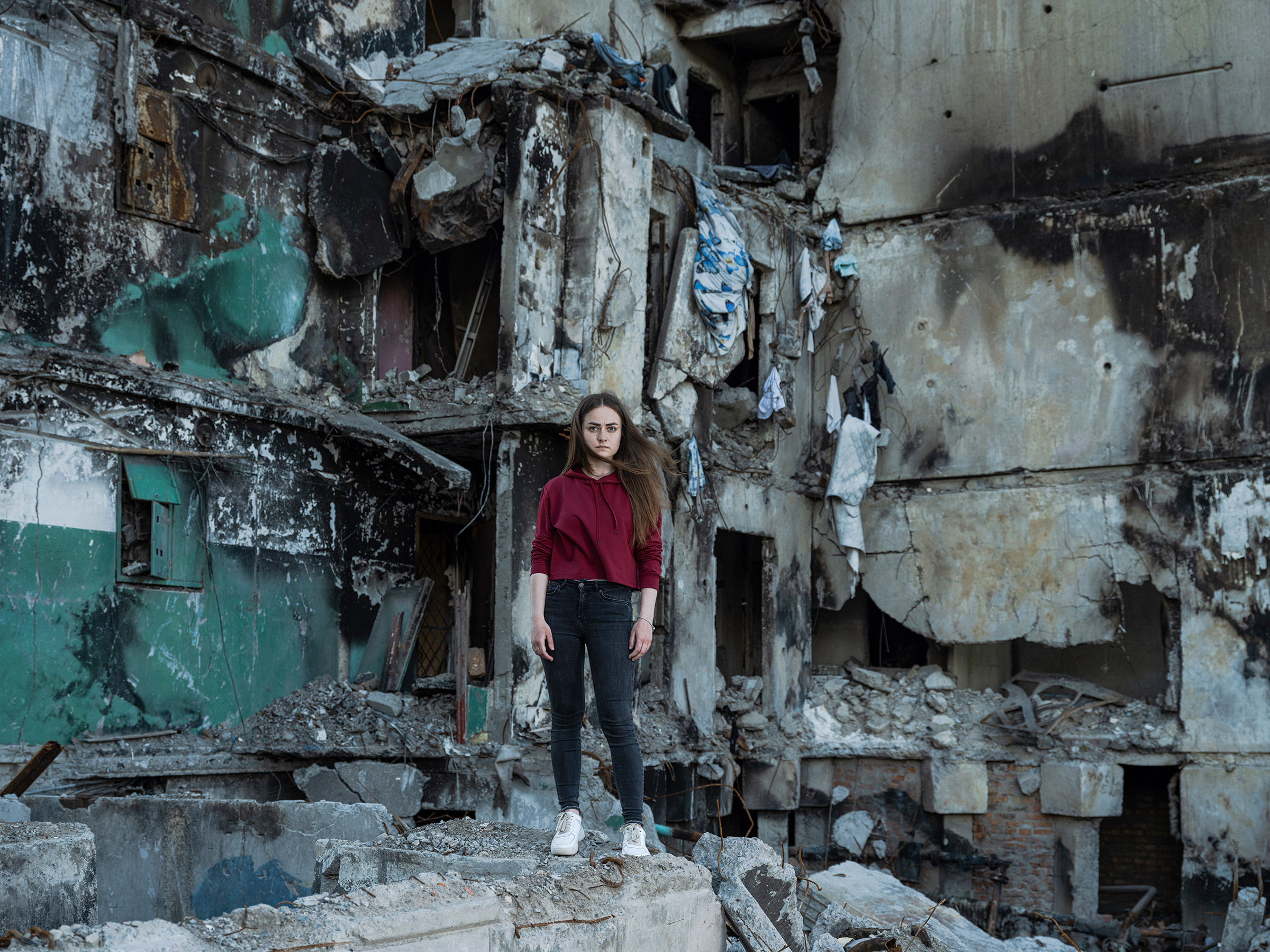
Sasha Maslov
Ukrainian photographer Sasha Maslov remembers capturing 22-year-old Katya Baranivska standing on the ruins of the building where she grew up and where her parents lived when Russia invaded Ukraine last February. “There is so much in this photograph—it sums up these feelings of anger, outrage, and resilience,” Maslov says.
Maslov has always felt he needed to stay in Ukraine to document the war. “It wasn’t really a question of whether to… stay or not stay—rather for how long, where and which stories are more important,” Maslov says. “I just needed to be here… As a Ukrainian, it is also a duty.”
A few weeks into the war, the gravity of the situation hit Maslov. While on a train heading from Kyiv to Lviv in March, he saw a woman get on the train with her daughter. They looked calm but tired. The girl started crying; her mother appeared stoic but was petting her head. The child asked her mom whether Russians would drop bombs where they were going. “That just broke me,” Maslov says.
“My motivation is the people I meet and photograph, as well as the overall feeling of being on the side of the truth,” Maslov says.
More Must-Reads from TIME
- Introducing the 2024 TIME100 Next
- The Reinvention of J.D. Vance
- How to Survive Election Season Without Losing Your Mind
- Welcome to the Golden Age of Scams
- Did the Pandemic Break Our Brains?
- The Many Lives of Jack Antonoff
- 33 True Crime Documentaries That Shaped the Genre
- Why Gut Health Issues Are More Common in Women
Write to Sanya Mansoor at sanya.mansoor@time.com
